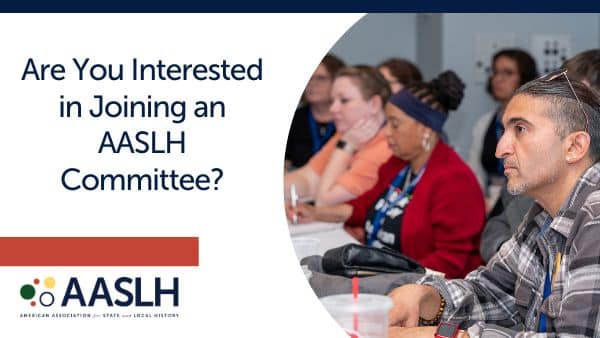By Aja Bain, AASLH, and Mary Beth Rauzi and Mary Manning, Cleveland Grays Armory Museum
Exciting changes are happening at the 960 organizations taking part in the StEPs program (Standards and Excellence Program for History Organizations).
Our “StEPs Spotlight” blog series highlights accomplishments by participating organizations.
Below is another example of how StEPs is helping organizations take a leap forward by improving policies and practices, opening lines of communication, and setting goals for a bright future.
Cleveland Grays Armory Museum
Cleveland, Ohio

The 1893 Cleveland Grays Armory.
The Cleveland Grays is a historical society whose mission is “to preserve their historic Armory Museum, advance the military heritage of Greater Cleveland through public awareness and educational programs, and support the men and women of the armed forces.” The Cleveland Grays Armory was originally built as a functional armory, and at that time there was no large social venue for Cleveland. The Grays felt that using the Armory as a site for cultural and social events would be an opportunity for the Grays to give back to the Cleveland community, and the museum was opened in the 1970s.
Today, the Cleveland Grays preserves the Armory in its magnificent Victorian splendor, growing its museum and continuing to provide programs and tours for the public. Tours focus on the military history, while frequent programs range from historical to present day issues with a wide variety of speakers to interpret Cleveland’s rich history.
We’ve been involved with the StEPs program since January 2017, and we have an AmeriCorps partner working as a consultant with the museum as part of a larger project sponsored by the Ohio History Connection.
What would you say is the most significant change or improvement within your organization as a result of taking part in StEPs?
One of the most significant changes has come from having a firm blueprint to move forward with. StEPs gives the staff a “certified” list of professional standards to argue for what they do or do not need and what should be done now versus a year from now. We have seen the staff approach projects with renewed enthusiasm because it is clearer how doing things like sorting out mailing lists or writing new tours can benefit them because the StEPs standards spell out how you move from Basic to Good to Better in that particular arena. Working together on the StEPs project has allowed us to realize that this is something we can accomplish and use to improve our museum.
Tell us about some other specific examples of positive changes within your organization as a result of participation in StEPs.
New policies are always good. Having an AmeriCorps member, who is trained and available to help museums create effective policies that can be implemented and sustained, has been a tremendous help. Because of the StEPs recommendations, CGAM has formalized procedures that had not previously been documented, like making clear that the Executive Director is the press contact and having an organized marketing plan with goals.
Also, although the Board includes a group of committed historians that make up the Museum Committee and make collections determinations, they had not previously taken steps to firm up an interpretive plan and interpretive goals. StEPs brings the creation of those documents front and center as a goal for the committee and, because they have come to understand the value of adhering to StEPs and museum professional standards, they are starting to have serious conversations about interpretive planning, as well as strategic planning, for the museum as a whole.

Tell us how your organization is making its way through the program.
Because the CGAM has been in transition for years from a private organization to a museum, we decided to start with a couple of StEPs sections in which they had most recently done the most work—Audience and Interpretation—to ensure that that work was on the right track and that the museum could continue to grow in those areas. Together, we sat down with the performance indicators and discussed how our programs and policies did or did not fit. After the Grays hit most, if not all, of the Basic level indicators in a section, we found that the remaining indicators mostly refer to long-term projects, especially for a museum with such a small staff.
When there are questions about policies, e.g., what does a good policy look like, we discuss how those policies can be adapted to fit the museum’s needs and who needs to be brought on board in development to create a proper policy for the organization. We have also made lists of projects and necessary outcomes to bring to the appropriate Board committees, and we intend to continue moving through Basic indicators and otherwise use StEPs to take stock of the current state of the organization.
What advice do you have for organizations just starting in StEPs?
Jump right in! The program has been a great starting point for us to grow as a museum. The workbook is intimidating in size, but all you need to do is choose a section to start on and work on one page at a time. We have been very lucky in having an AmeriCorps member who has worked as a mentor and colleague with us on our StEPS journey.
Finally, which section of the workbook has been your favorite, and why?
The Audience section is our favorite because bringing people into the museum is more rewarding than anything else. The 1893 Grays Armory building itself is truly a landmark—it has so much character, and visitors get so excited about it! The more people we can connect to the building and the museum organization, the better the chances of ensuring a successful future.



